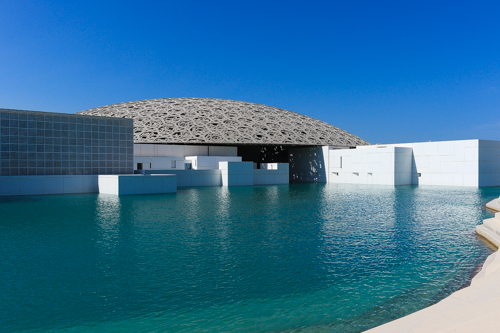
Louvre Abu Dhabi was one of my two main reasons for wanting to travel to the United Arab Emirates (UAE). (The other reason was the Sheikh Zayed Grand Mosque.)
The museum opened in November 2017 as a collaboration between Abu Dhabi and France. Since then, many articles have talked about it, which made me want to fly to the UAE just for that. You’d be mistaken if you viewed it merely as a branch museum of the Paris Louvre. In fact, we fell in love with this museum and visited twice during our 2-day stay in Abu Dhabi.
Architecture inspired by the locality – dome and cubes floating on the ocean
The lead architect of the museum is Jean Nouvel. His work is always inspired by the locality, and this museum is no exception. The Arabian land is characterized by scorching sunlight, palm-tree lined oases, and cube-shaped desert houses. The open-air installation is covered by a huge dome inspired by a palm tree, which filters the glare of the sunlight in the same way as a real palm tree in an oasis. The dome structure appears to float on the blue ocean, surrounded by white cubes that represent an Arabian village.
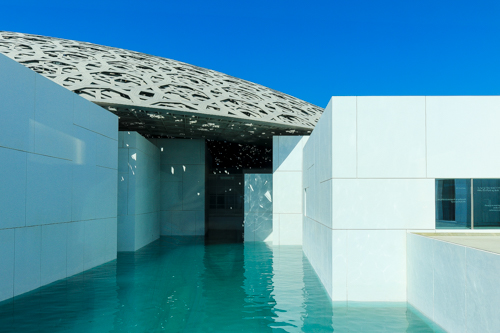
Where light is designed to fall like rain
Beneath the dome, this is the view you’ll see – sunlight is designed to fall like rain from the ceiling onto the floor and walls below. The open-air space and sea breeze make you forget you’re in the middle of the desert. In the daytime, the perforated ceiling reflects the blue ocean and allows the sunlight pour in, creating a beautiful contrast of blue light and shade. The way the light comes in changes constantly throughout the day.
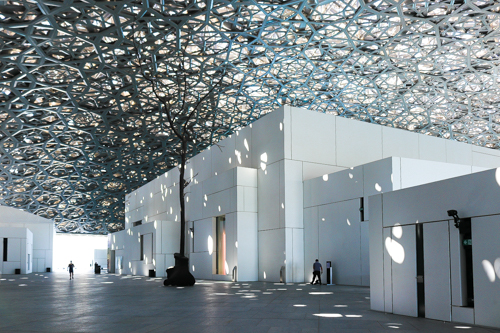
It’s not only the way the sunlight pours in, but its color that keeps changing. In the daytime, the ceiling reflects the blue color from the ocean, while in the evening, .the reflection turns an orange-ish color.
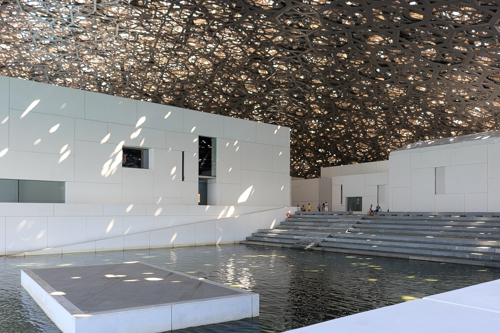
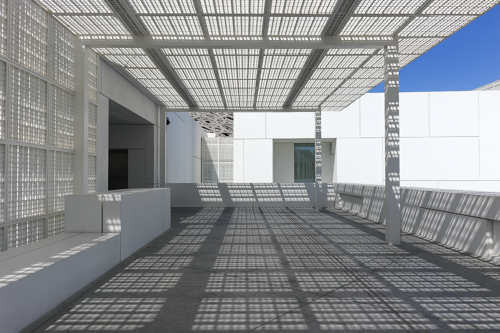
The exhibition expresses its headline – “See Humanity in a new light.”
The museum is positioned as an art and civilization museum. When I read the headline “See Humanity in a new light,” I didn’t get it. (In other words, I felt the concept was too big and ambitious.) I did come to understand it after setting foot inside the 1st room, however, and I fell in love with how the way the museum aims to tell us about human nature.
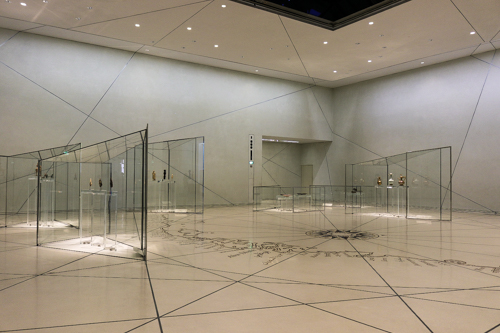
This is the display that grabbed my heart first. It reads, “Motherhood. What is the secret of the universal gesture of love from a mother to her child? It brings the child to life and opens the path of existence, turning us into human beings and instilling in us a desire for fraternity.” There are three small statues from different regions and different times that are all holding a child in a very similar way.
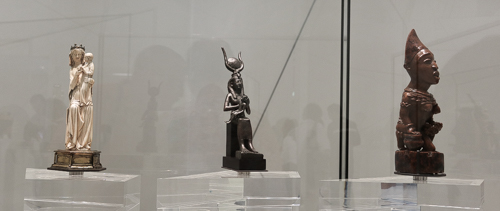
This really got to me. It shows that human being’s love is universal and that all humans express the love to their kids in a similar way. The collection showed an aspect of universality of human beings, by simply showing the three statues!
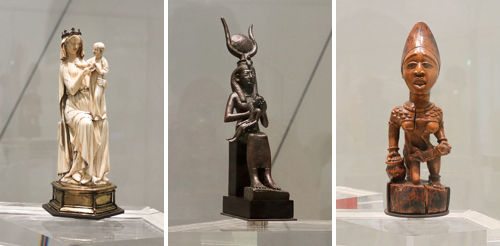
The 1st room has more displays showcasing the universality of human beings. This display of three ewers asks, “What are such similarities manifest in these ewers? Are they the result of stylistic influences? Or do they share something universal? There are not a thousand and one ways of pouring water. It requires balance and sets a rhythm. Free and impalpable, water needs to be tamed and contained…” These luxurious ewers from different times might indicate that all designs reflect a sense of beauty and all converge into one expression.
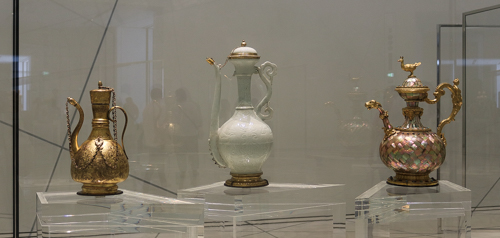
The impressive way of displaying “arts by human beings” continues in the following rooms. The entire collection showcases the similarities and exchanges created by humans, transcending geography, times and culture. This was one of my favorites. It’s a black-stone statue from Iraq named “Gudea, prince of Lagash. About 2120 BCE.” The facial expression, the muscular arm, and the way in which the hand is held tightly, all of these describe the sincerity of this prince. I thought it shows the sincerity of humans has unchanged through human history.
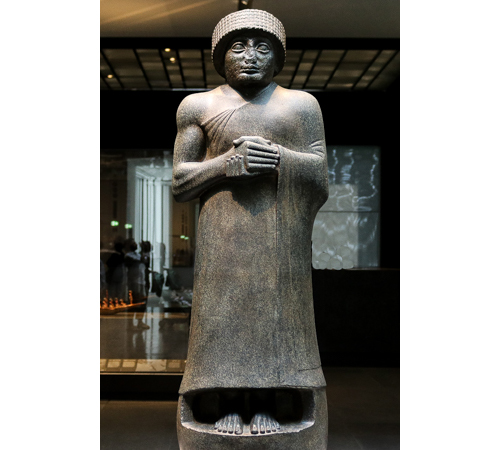
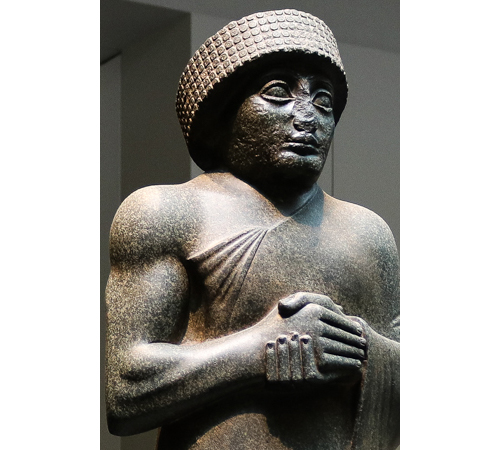
Another highlight for me was the map of Japan created in around 1690, when, of course, Japan had no mean of creating the accurate types of maps that we see today. In fact, based on what we know of the shape of Japan’s islands, the map is not so bad. Beyond the accuracy, what stuck me was why humans even began creating maps and globes in the first place. “Around 1500, Man was able to travel all around the globe… Awareness of the magnitude of the world prompted questions about the meaning of the universe…” This statement explains the passion for creating maps at a time when traveling around a small island was not easy and the instruments used were not precise, thus highlighting the curiosity in attempting to figure out how the entire place looked.
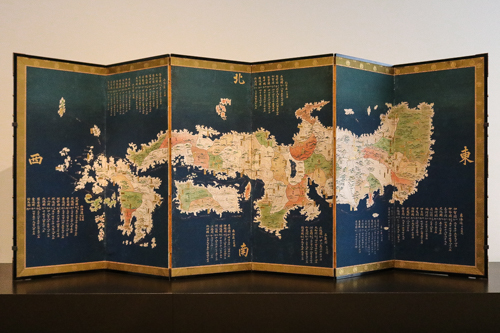
By the way, whenever I go to a good museum, my brain continuously absorbing many things, to the point where it can take no more! So I like prefer to splitting the time into 2 or 3 visits in order to fully enjoy the collection. The Louvre Abu Dhabi is definitely the one. In fact, I visited twice during my 2-day stay in Abu Dhabi. It’s worth spending a full day at this museum, not only to enjoy the collection but also to appreciate the open-air space under the dome or at a cafe.
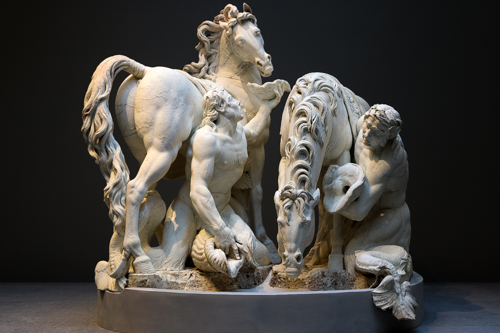
Access: It’s a 5-20 minute taxi ride from the city.
How long to spend there: 3-6 hours
